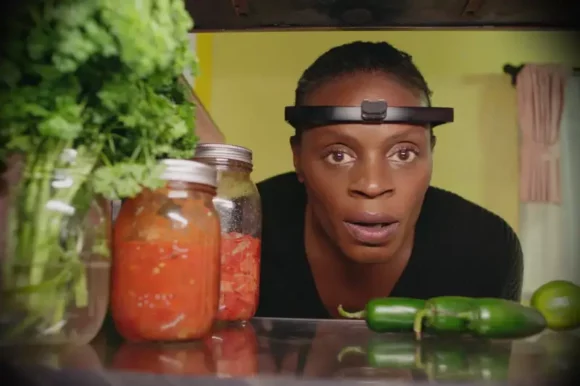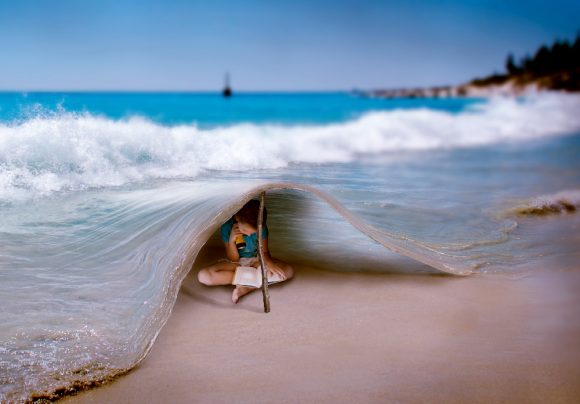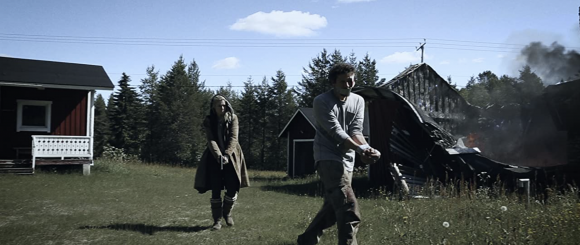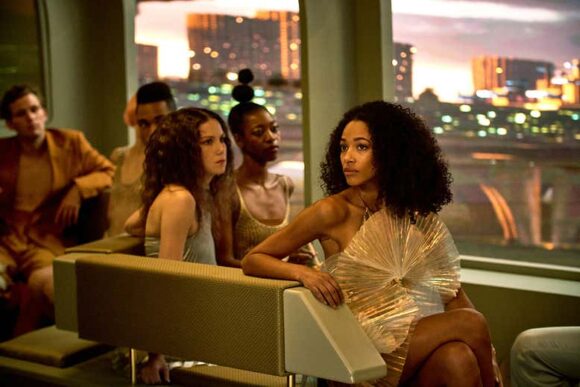Watching Michael Tyburski’s Turn Me On for New Scientist
An eccentric visionary has created a commune centered around a pharmaceutical — a “vitamin” — that suppresses human emotion. The venture promises contentment to its followers, and to ensure their contentment, all memory of their lives before they join the cult is erased.
A cult member’s cancer treatment requires she miss her vitamin dose for just one day. So here she is, a young woman called Joy, played with exquisite precision by the young British actress Bel Powley, staring into her bathroom mirror, waiting for the affective life to roll over her like a tidal wave.
Nothing.
Still nothing.
And then a giggle. Not a sinister, half-hysterical giggle. Not an experimental, off-centre giggle. A genuinely delighted giggle, at finding herself alive.
Bel goes off on a beach holiday with her friends, still within the the project’s property line. (At the border, a sign planted in the gravel warns of “Unknown Dangers” in the world beyond). And a drab old time they have of it, too, playing the exciting-sounding VR game WOAH, which turns out to stand for “World Of Average Humans”. Joy’s friend Samantha (Nesta Cooper) breathlessly explains: “In real life I’m a wellness engineer, but in the game, I play an assistant wellness engineer.”
Bel finally takes matters in hand and throws away the house’s supply of vitamin. And after all, “it’s just for one day”.
The strange and wonderful thing about Michael Tyburski’s second feature (after 2019’s excellent The Sound of Silence) is that it is a dystopia built upon an essentially comic view of the human condition. Screenwriter Angela Bourassa creates revealing rules for this tyranny. You don’t have to take its vitamin. That’s entirely up to you. But heaven help you if you miss day of work. This hyper-utilitarian cult isn’t robbing its victims of their potentiality or their dignity. The crime here is that it’s stealing away all their fun and friendship. People are supposed to goof off, is the message here. This is what people are for.
When Joy and her friends discover sex, things get more fraught. Joy’s uncomplicated and public coupling with her friend Christopher (Justin Min) knocks him for a loop and makes her officially appointed partner William (Nick Robinson) sick to his stomach. Who could have predicted that?
One by one, as they confront the emotional consequences of their actions, the friends decide to go back on the vitamin. Alone again, Joy is taken aside and told she has what it takes to be an overseer of this place. All she has to do is never see William again, though its clear enough the two are falling in love. Will Joy accept this Mephistophelian bargain?
The superbly sardonic D’Arcy Carden is the nearest thing the cult has to an authority figure: essentially, she’s reprising her role in the sitcom The Good Place, to which Turn Me On bears a certain resemblance. Fairer to say, perhaps, that Turn Me On is a worthy addition to that small but admired genre that includes The Good Place, 2004’s Eternal Sunshine of the Spotless Mind and Apple’s ongoing TV show Severance.
The target is, as usual, utilitarianism. The pursuit of the greatest good for the greatest number works well on paper but falls foul, very quickly, of the Kantian imperative not to use people as a means to fulfil your ends. There’s a reason “For the greater good” is the go-to excuse for tyrants and killers.
What will the cult will do to Joy if she refuses to join their upper echelon? It’s almost certain to be unpleasant.
“Leave me a alone”, says a neighbour who came off her vitamins earlier in the movie, “and don’t let them know you’re awake.”






